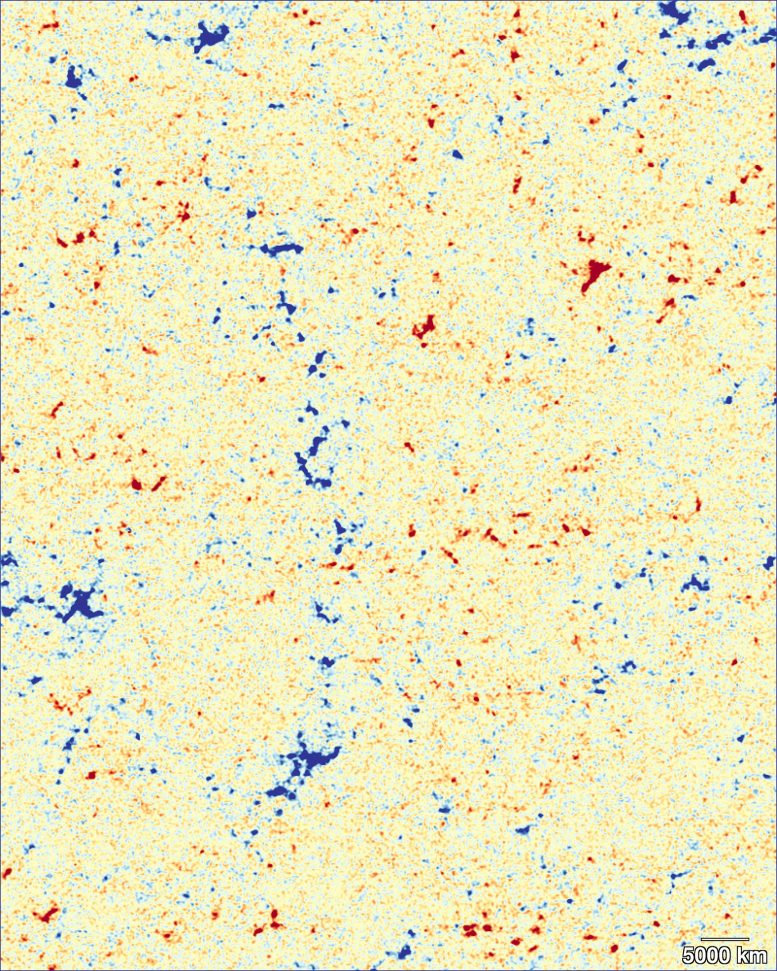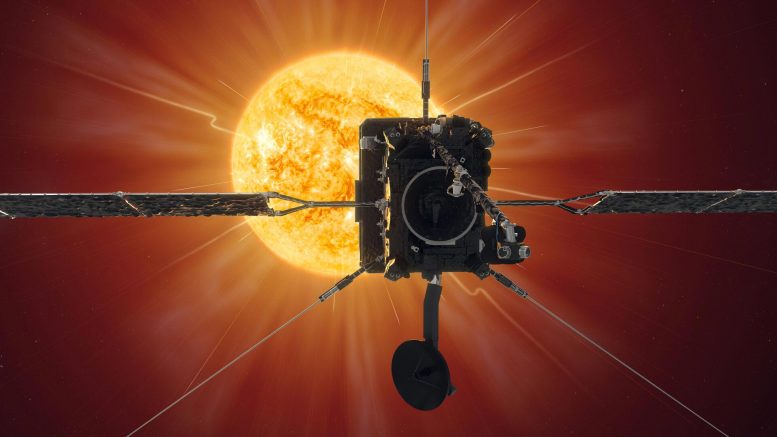This image was taken by the Solar Orbiter’s Extreme Ultraviolet Imager (EUI) and shows clearly the arch-like hot loops of plasma that reach up into the solar corona. Credit: ESA & NASA/Solar Orbiter, EUI team
Recent images from the Solar Orbiter’s perihelion pass in October 2022 have unveiled the role of transient magnetic fields on the Sun’s surface in shaping the solar corona. These findings help explain the corona’s high temperature and contribute to our understanding of solar physics.
Thanks to close-up images of the Sun obtained during Solar Orbiter’s perihelion passage of October 2022, solar physicists have seen how fleeting magnetic fields at the solar surface build up into the solar atmosphere.
The outer solar atmosphere is known as the solar corona. It is termed ‘quiet’ when there is little appreciable solar activity such as flares or coronal mass ejections. How the quiet corona reaches a temperature of a million °C when the surface is just at ~6000 °C is a long-running mystery.
Although the action of magnetic fields has long been suspected, the nature of the magnetic processes responsible has never been fully understood. These new images of the quiet Sun show how loops of million-degree gas – which form the building blocks of the solar corona – are associated with fleeting 100-km-sized magnetic field patches on the solar surface.

This image comes from the Solar Orbiter’s Polarimetric and Helioseismic Imager (PHI) and reveals the magnetic polarity of the solar surface. Credit: ESA & NASA/Solar Orbiter, PHI team
The images show the view from two of Solar Orbiter’s instruments. The yellow image was taken by the Extreme Ultraviolet Imager (EUI) and shows clearly the arch-like hot loops of plasma that reach up into the solar corona. The speckled image comes from the Polarimetric and Helioseismic Imager (PHI), and reveals the magnetic polarity of the solar surface. The red and blue shaded regions represent patches of north and south magnetic polarities. A clear correlation can be seen between the small patches of magnetic fields and the coronal loops.
The coronal loops are apparently linked to scattered concentrations of the small-scale magnetic field concentrations on the surface, often with mixed-polarity configuration. This complex arrangement and the temporal evolution of these small magnetic field patches play a role in the building of the million-degree corona.

ESA’s Sun-explorer Solar Orbiter reached its first perihelion, the point in its orbit closest to the star, on June 15, 2020, getting as close as 77 million kilometers to the star’s surface. Credit: ESA/Medialab
These observations capture surface magnetic structures and coronal features at almost the same high spatial resolution of ~200 km, allowing the data from the two instruments to be closely compared. With these unique data, solar physicists now have a window to investigate the role of the small-scale magnetic fields in the building of solar corona.
This new result is reported in the paper “Fleeting small-scale surface magnetic fields build the quiet-Sun corona” published in Astrophysical Journal Letters.
Reference: “Fleeting Small-scale Surface Magnetic Fields Build the Quiet-Sun Corona” by L. P. Chitta, S. K. Solanki, J. C. del Toro Iniesta, J. Woch, D. Calchetti, A. Gandorfer, J. Hirzberger, F. Kahil, G. Valori, D. Orozco Suárez, H. Strecker, T. Appourchaux, R. Volkmer, H. Peter, S. Mandal, R. Aznar Cuadrado, L. Teriaca, U. Schühle, D. Berghmans, C. Verbeeck, A. N. Zhukov and E. R. Priest, 5 October 2023, The Astrophysical Journal Letters.
DOI: 10.3847/2041-8213/acf136
Solar Orbiter is a space mission of international collaboration between ESA and NASA, operated by ESA.





